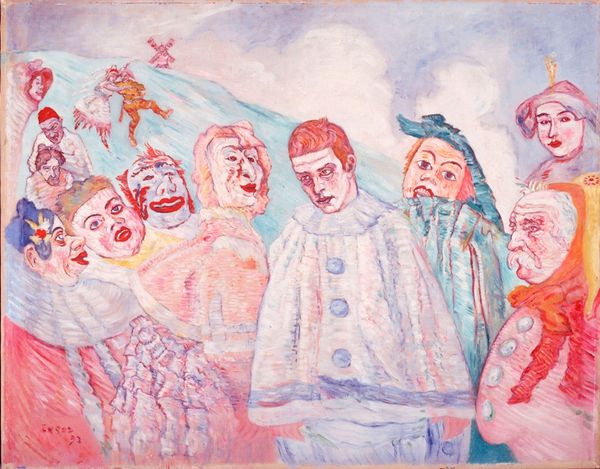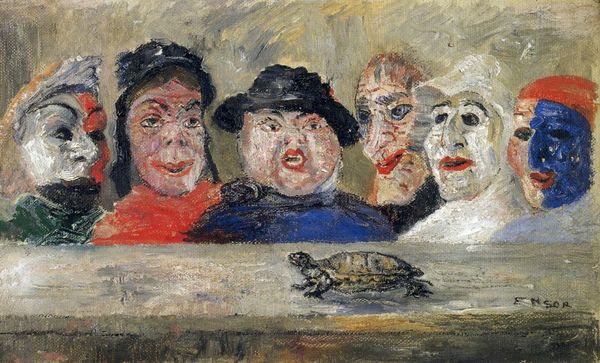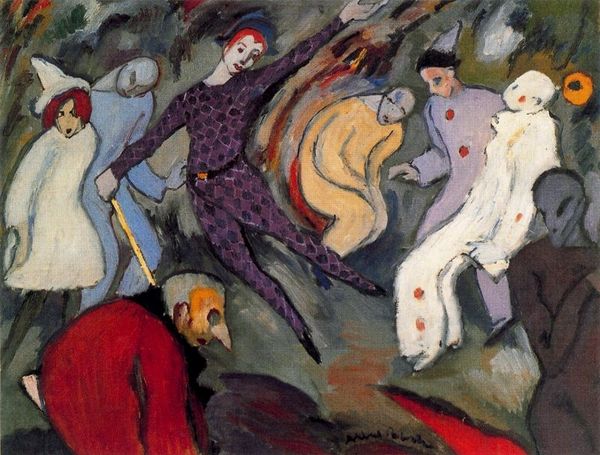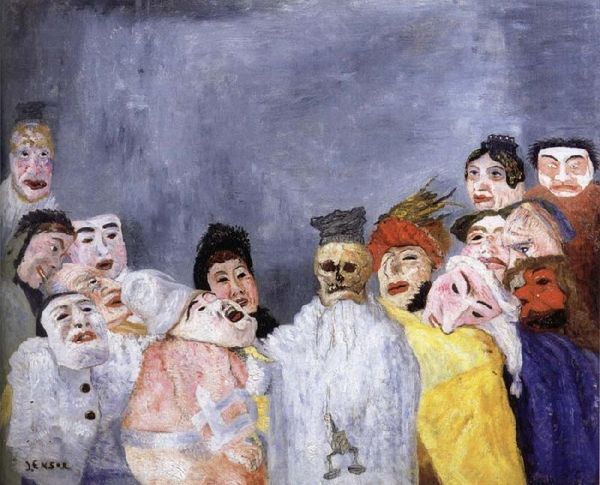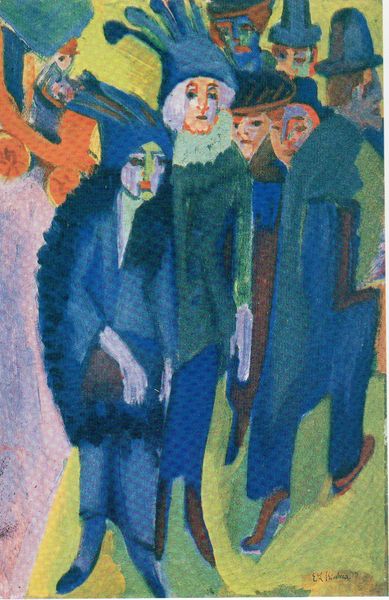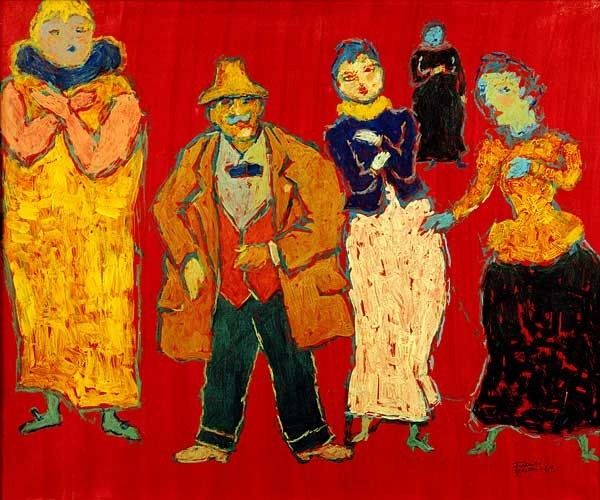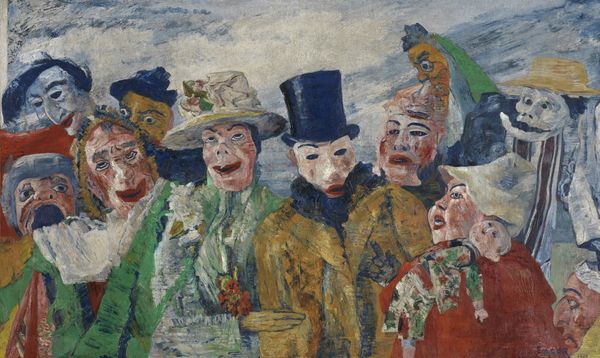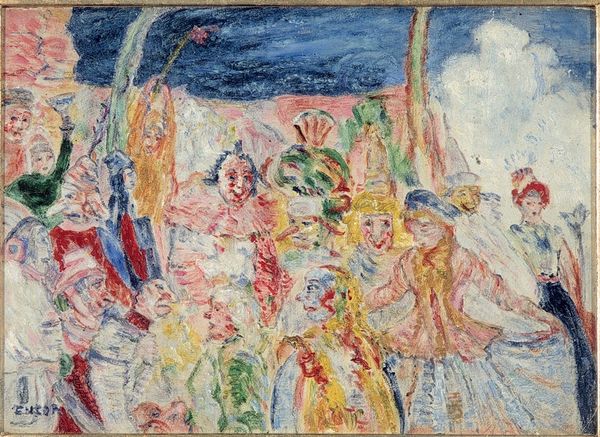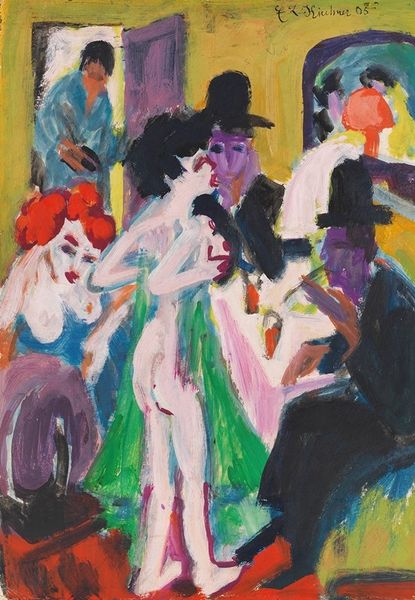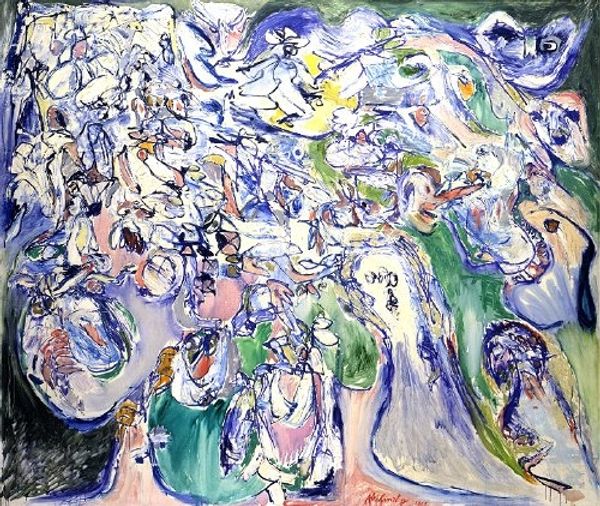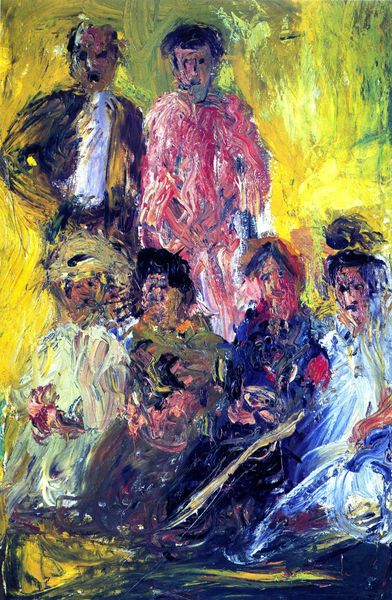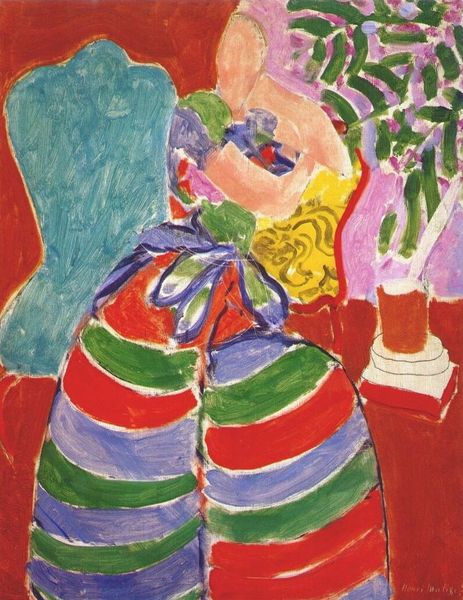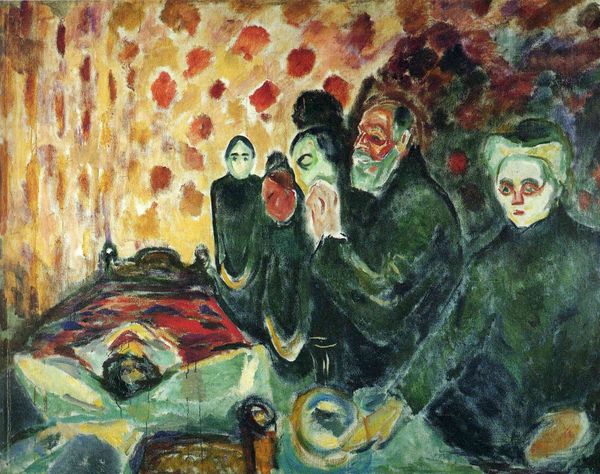
painting, oil-paint
#
painting
#
oil-paint
#
oil painting
#
naive art
#
symbolism
#
painting art
#
history-painting
#
portrait art
Copyright: Public domain
Editor: Here we have James Ensor’s "Death and the Masks," painted in 1897 with oils. It’s… intense. The masks feel grotesque, but in a way that almost satirizes high society. What do you see in this piece? Curator: I see a potent critique of social hypocrisy and the performative nature of identity, very relevant in today's context. Ensor was deeply engaged with the societal masks people wear, and their power dynamics. Think about the rise of social media; do you see any parallel in how we construct our online personas? Editor: Definitely! It’s like the masks have just evolved from physical objects to curated online profiles. The vacant stares feel particularly unsettling. Curator: Exactly! And what about the skeletal figure? Doesn't it seem to preside over this masquerade, revealing the futility of these constructed identities in the face of mortality? Consider how this imagery emerges from the context of late 19th-century anxieties about societal change and the breakdown of traditional hierarchies. Editor: I hadn’t thought of it that way, but that makes sense. So it's not just a painting about death, but about how society avoids confronting uncomfortable truths? Curator: Precisely! Ensor compels us to confront those very truths, stripping away the superficial layers to reveal what lies beneath. And he is doing this through subject matter, composition, and expressive brushwork, challenging the status quo in art and society. Editor: So, looking beyond the surface reveals layers of meaning related to identity and social criticism. Thanks, that’s really helpful. Curator: My pleasure. Ensor used masks to encourage conversation about self, class, and power and even today the implications of such discussion are important to remember.
Comments
No comments
Be the first to comment and join the conversation on the ultimate creative platform.
